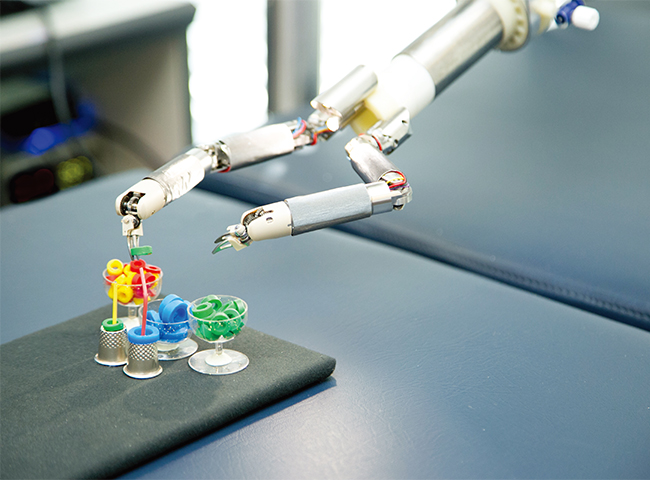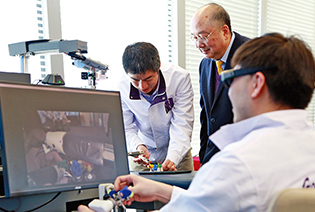
Drawing on expertise developed and insights gained from designing precision tools for space exploration, a PolyU team has engineered the revolutionary internally motorised minimally invasive robotic system for single-incision or incision-less surgery.

Mounted on standard surgical tables, the NSRS features a 3D camera and can be fitted with three or more surgical robotic arms.
The confined spaces of the body have long confounded surgeons, forcing them to make numerous incisions to perform complex operations, subjecting the body to trauma. Conventional robotic surgery has started to overcome that imposition but still requires up to six incisions and offers limited tactile feedback to surgeons. Nothing could seem further from providing a way of overcoming these limitations than the limitless reaches of outer space. Yet a team led by Prof. Yung Kai-Leung, Associate Head of the Department of Industrial and Systems Engineering, harnessing its experience in making precision space implements, with innovation inspired by science fiction toys, has produced a robotic surgical system that requires just a single incision or no incision at all.
Seen in the context of surgical techniques developing over time, this is a remarkable achievement. Robotic surgical systems have only been in use since the 2000s, and the push for minimally invasive procedures predates that by just a decade. Still, robot-assisted surgery is becoming more common, with the number of cases in Hong Kong public and private hospitals doubling in the last six years. There were more than 600,000 cases in the world last year, growing at an annual rate of over 10%.
With this in mind, a team of surgeons from the University of Hong Kong (HKU) approached the PolyU engineers wanting to integrate cutting-edge technologies into a surgical platform that would make robotic surgery safer and less invasive, with the ultimate aim of providing significantly better patient care. The ensuing collaborative project, funded by NISI (HK) Limited – a medical device company specialising in non-invasive surgical research – with support from the Innovation and Technology Commission of the HKSAR government, has blazed a new trail in surgical platform design. The resultant Novel Surgical Robotic System (NSRS) with tactile feedback capable of single incision or natural orifice surgery allows surgeons to operate with high precision while being aware of the force applied to their patients. This is a significant breakthrough compared to the systems in current use, with doctors in robotic surgery training often feeling hindered by a lack of ability to feel the tissue they are working on.
